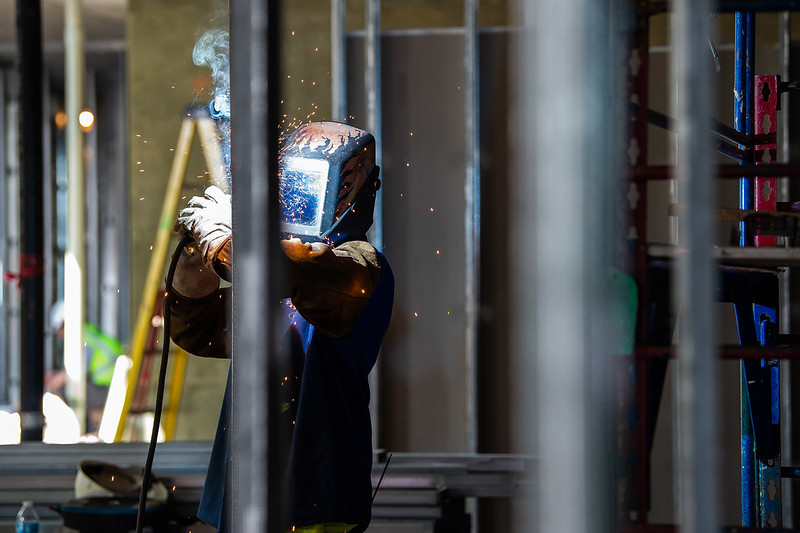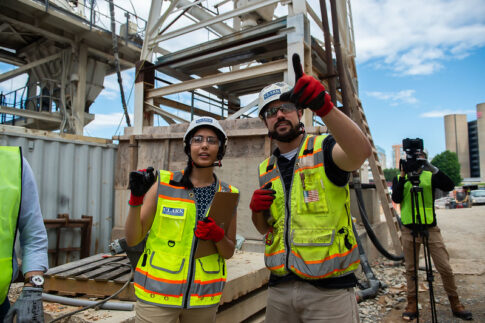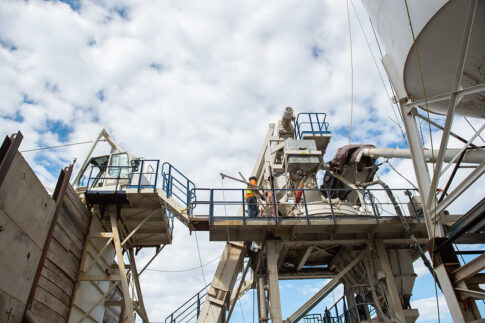
How STEP influences the role of a superintendent through leadership, culture, process + results
By Joe Xavier
Our people are our greatest asset, and we must take advantage of every opportunity to leverage and advance world-class safety for the construction workforce of more than 7.5 million. Safety is an essential pillar of Associated Builders and Contractors’ mission, and we strive to ensure all construction workers go home in the same — or better — condition than when they arrived on the jobsite or at the office.
One of the most important tools in the journey to safety is the STEP Safety Management System. Founded in 1989 as a safety benchmarking and improvement tool, STEP has evolved into a world-class safety management system that dramatically improves safety performance among participants, regardless of company size or type of work. The top-performing STEP members are more than six times safer than the U.S. Bureau of Labor Statistics’ construction industry average.
Participating ABC member firms measure their safety processes and policies on key components through a detailed questionnaire, with the goal of implementing or enhancing safety programs that reduce jobsite incident rates. Companies receive a rating of Diamond, Platinum, Gold, Silver, Bronze or Participant based on their safety performance.
 “At Cianbro, it is all about people,” said Rob Mayhew, project superintendent for Cianbro Corp., Pittsfield, Maine. “We believe our team members deserve to go home in better condition than which they arrived at work in — more enriched. We accomplish this through a culture of caring and continuous improvement. STEP has provided us with a tool to measure our own performance beyond TRIR and learn from best practices in the industry. The key components of STEP are embedded throughout our safety program. It starts with engaged leadership, thorough planning of the work and having team members believe that they can work safely in this industry.”
“At Cianbro, it is all about people,” said Rob Mayhew, project superintendent for Cianbro Corp., Pittsfield, Maine. “We believe our team members deserve to go home in better condition than which they arrived at work in — more enriched. We accomplish this through a culture of caring and continuous improvement. STEP has provided us with a tool to measure our own performance beyond TRIR and learn from best practices in the industry. The key components of STEP are embedded throughout our safety program. It starts with engaged leadership, thorough planning of the work and having team members believe that they can work safely in this industry.”
STEP focuses on tangible foundations of an effective safety program, like robust substance abuse prevention programs, intensive new hire safety orientation, frequent toolbox talks and employer engagement at the highest level of company management. The questionnaire also provides insights into the leading indicators that have the most dramatic impact on safety performance, including incident investigations, PPE, pre-planning for project safety and supervisor safety meetings.
ABC annually quantifies the positive impact of proactive injury and hazard elimination tools on the jobsite using data from more than a billion hours of work gathered from STEP participants in construction, heavy construction, civil engineering and specialty trades in its Safety Performance Report. Analyzing aggregated data allows ABC to determine how measures taken to prevent incidents actually improve trailing indicator performance.
For example, one-third of all incidents on construction jobsites are drug- or alcohol-related. ABC’s research has shown that effective substance abuse prevention programs can improve TRIR and DART rates by 60-70%. Key elements of such an approach include a safety policy with strict rules regarding drug and alcohol use, supervisor training, active enforcement, drug and alcohol testing, an employee assistance program and education on substance abuse prevention. ABC STEP members are required to sign a pledge to create and maintain a workplace free from substance abuse.
 While traditional safety behaviors are observable, we must look deeper into the complexity of conditions that affect the decision-making process of our people while they perform their essential tasks. We must continue to raise the bar and recognize that the evolving culture of safety includes both physical safety and total human health — emotional, social, mental, intellectual, financial, occupational and spiritual wellness. This realization is the genesis of the next era in construction safety as we work to incorporate total human health components into the STEP Safety Management System.
While traditional safety behaviors are observable, we must look deeper into the complexity of conditions that affect the decision-making process of our people while they perform their essential tasks. We must continue to raise the bar and recognize that the evolving culture of safety includes both physical safety and total human health — emotional, social, mental, intellectual, financial, occupational and spiritual wellness. This realization is the genesis of the next era in construction safety as we work to incorporate total human health components into the STEP Safety Management System.
“My team and I understand work can sometimes throw us a challenge or two,” said Trey Bates, lead superintendent, Harkins, Columbia, Maryland. “One thing I can always count on is collaboration with trade partners on project sites because we all share a common goal that everyone makes it home safely to their loved ones. To me, safety means leadership, culture, process and results.”
Safety starts from the top down, Bates added.
“As a member of the Harkins Safety Committee, I see senior management lead by example in their commitment to safety by providing time and money to directly impact the well-being of everyone onsite,” he said.
While working on project sites, Bates continued, one thing that increases safety awareness is educating team members that safety is everyone’s job.
“With shared responsibilities, our trade partners’ actions mirror the safety program,” Bates said. “The STEP program is an excellent tool that has made possible the implementation of an effective safety program that starts with a good culture of safety, as actions speak louder than words.”
Safe jobsites are also a way to recruit and retain the best workers, by showing employees that both their work and well-being are valued. And, at a time when the skilled workforce shortage is in the hundreds of thousands, leaders must give workers a compelling reason to join or stay with them.
“I have the overall responsibility to manage and lead my fellow employees, owners and trade partners on the project site with a focus on safety, quality and production,” said Ron O’Brien, lead superintendent, Harkins, Columbia, Maryland. “When it comes to safety, it is my duty to make sure we do what is right and that we all go home safe. Within my organization, I am provided the tools and ongoing training necessary to be effective at driving safety. I have learned to establish a plan, implement the plan and monitor as situations change on an ever-evolving project. In addition, I can ask questions, be heard and make a difference through Harkins Safety Committee. Most importantly, I have the support of executive leadership, who have created a culture that makes it easy to make the right and safest decision. All of the above is possible with the implementation of the STEP principles.”
If we choose to lead, if we choose to commit and if we choose to transform, we can create the conditions for all to do their work without incident and go home safe and healthy every day. Tangible tools like the STEP Safety Management System provide leaders with a road map to win and deliver work without incident and keep our most valuable asset — our people — safe.
Joe Xavier is senior director, Health and Safety, ABC.
Photos courtesy of Associated Builders and Contractors.


 Join our thriving community of 70,000+ superintendents and trade professionals on LinkedIn!
Join our thriving community of 70,000+ superintendents and trade professionals on LinkedIn! Search our job board for your next opportunity, or post an opening within your company.
Search our job board for your next opportunity, or post an opening within your company. Subscribe to our monthly
Construction Superintendent eNewsletter and stay current.
Subscribe to our monthly
Construction Superintendent eNewsletter and stay current.